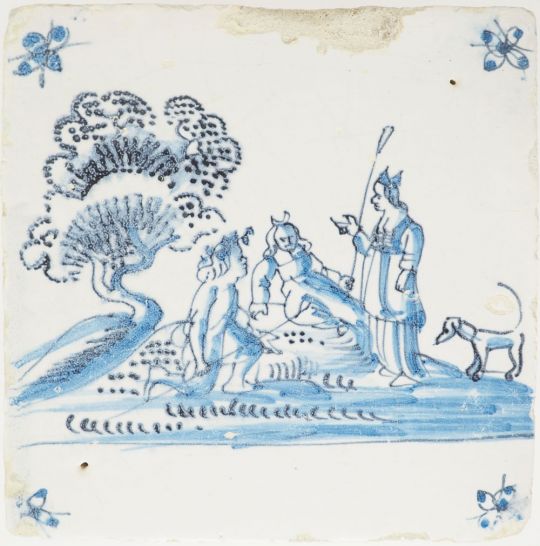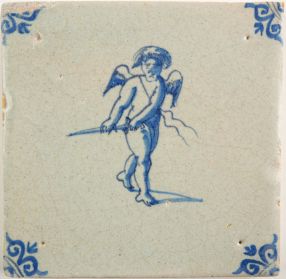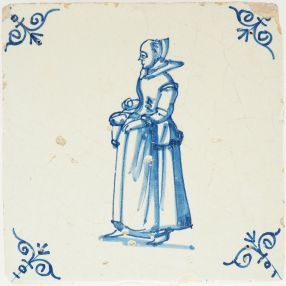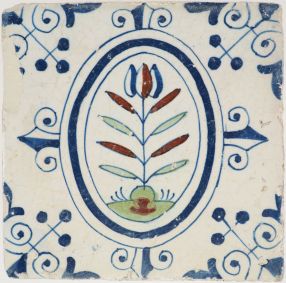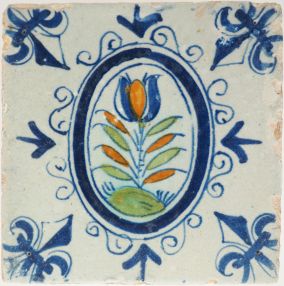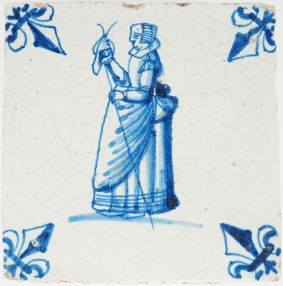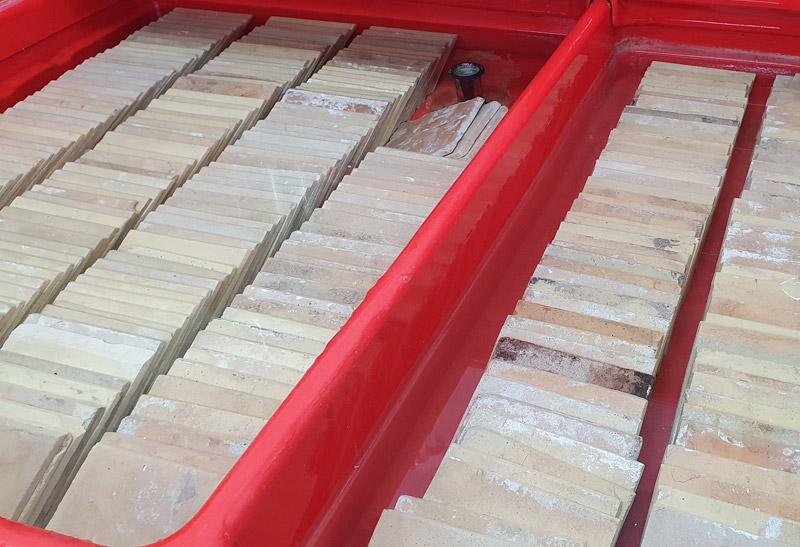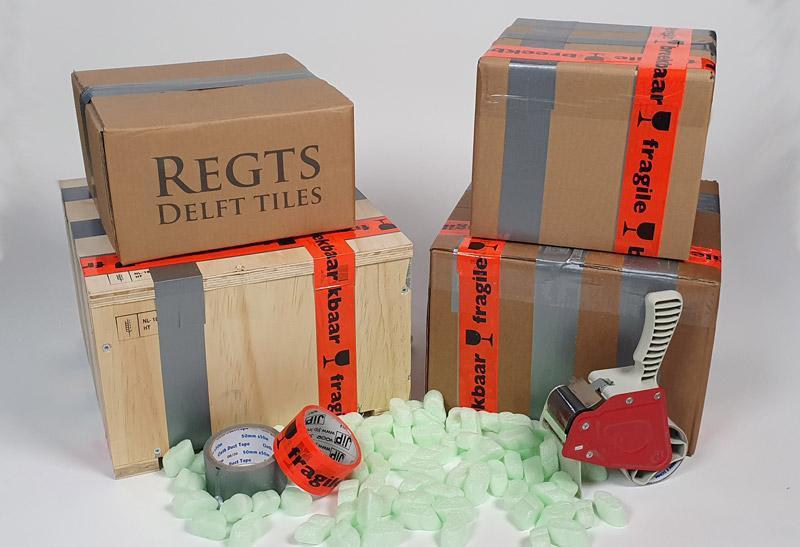Overview
This antique Delft tile dates from around 1660 and was made in the Dutch city of Harlingen. It depicts a scene from the story Granida, which is a pastoral romance written by Pieter Cornelisz Hooft in 1605. The story follows Granida, a Persian princess, Daifilo, a humble shepherd, and Dorilea, a noblewoman. Read more about the story below.
The tile is decorated with 'spider' corner motifs and is ovrall in a good condition. Do note the chip at the top side.
The Story - Granida, the daughter of the Persian king, is out hunting when she becomes separated from her retinue. She stumbles upon Daifilo, a shepherd, who offers her water in a simple but deeply respectful gesture. This moment sparks a romantic attraction between them, despite their vastly different social statuses.
Daifilo, enchanted by the princess, abandons his simple life to follow her. He eventually enters courtly service, proving himself as a noble-hearted and capable man. However, Granida is engaged to Tisiphernes, a Persian nobleman, creating a dramatic love triangle.
Meanwhile, Dorilea, another noblewoman, is in love with Daifilo, complicating matters further. Dorilea represents courtly love and expectation, whereas Granida represents idealized, unattainable love for Daifilo.
In the end, love triumphs over social constraints—Granida and Daifilo are united, overcoming class distinctions and arranged marriage expectations.
Buyers information
Specifications
| Inventory number | ATS 3188 |
|---|---|
| Size (approximately) | 13 by 13 cm's / 5.1" by 5.1" |
| Tile thickness (approx.) | 1 cm / 0.4" |
| Period | 1640-1660 |
| Century | 17th century |
| Production area (city) | Harlingen |
| Made in | the Netherlands |
| Restoration | No |
| VAT and/or Import duties | Antique tiles are sold within the margin scheme within the Europe Union. Antique tiles that are ordered from outside the European are often imported at a special rate (e.g. 5% UK). |
About Regts - Delft Tiles
We are a family firm specialized in Delft tiles. Our stock covers the entire production period, which started around 1570 and ended just after 1900. If you are interested in working with us, please always feel free to get in touch.About usContact us
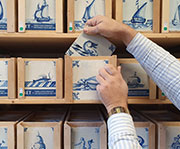

 10 out of 10
10 out of 10